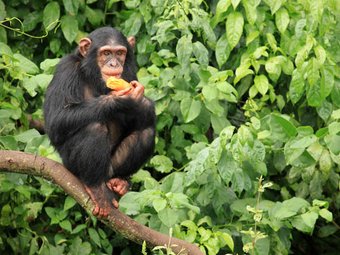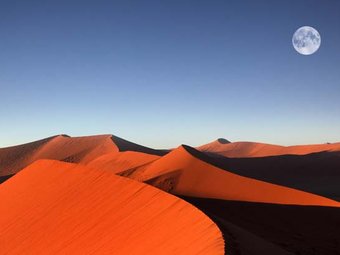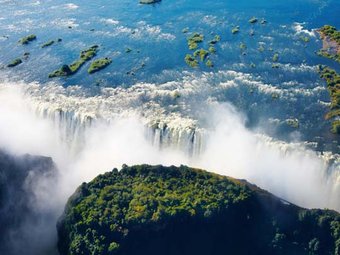The Spirit of Kenya
10 days—The Spirit of Kenya
$3410-5160 USD
pp
Safari summary
There are plenty of good reasons to visit East Africa. Kenya is blessed with some of Africa’s finest national parks, mountains, beaches and its lakes are filled with flamingos and pelicans. No wonder it’s one of Africa’s most popular destinations. The country’s natural beauty is also complemented by its proud cultural heritage. There are several tribes still living a traditional lifestyle such as the Samburu, Maasai and Turkana. Tourism is well established and there are some incredible eco-friendly boutique lodges and camps to choose from. In this way Kenya can really offer visitors a unique vacation.
About this tour
| Tour type | Custom, tailor-made, private | |
| Main focus | Game drives | |
| Activity level | Easy activity | |
| Best months | All months | |
| Countries | ||
| Parks |
Fine details
Safari highlights
- Cultural visits—orphanages, markets, schools
Itinerary
Day 1
Nairobi
Day 1: Nairobi International airport – Stanley’s hotel You’re guide and our SafariWise representative will meet you at the International Airport of Nairobi. We transfer you to the Stanley’s Hotel in Nairobi for a safari briefing and overnight. Accommodation: Stanley’s Hotel Meals: N/A . .
Day 2
Buffalo Springs | Samburu
Day 2: Stanley’s Hotel – Samburu Serena Lodge After breakfast we start our safari with a drive to Samburu National Park for 2 days of game drives around Samburu, also considered the ‘heart of Kenya’ located just south of the Equator. It boasts the most unusual flora and fauna of all East Africa’s major savannah reserves and offers unique vistas of rounded and rugged hills and undulating plains. The mix of wood and grassland with riverine forest and swamp is home to a wide variety of animal and birdlife. Buffalo Springs records over 365 species of bird. Game viewing and visibility is excellent. Reticulated giraffe, Grevy’s zebra, elephant, oryx, Somali ostrich, hippo, crocodile, gerenuk, buffalo, lion, leopard, cheetah and hyena will be seen. Samburu National Park: This game reserve is situated in the Northern Province of Kenya. It is rugged and a semi-desert. To get here we will cross the equator at Nanyuki and go to the northern hemisphere by passing the snow capped Mt Kenya lying astrand the equator line and huge blue mountains serve as a back drop to this game reserve. The environment is enchanting. The river Uaso Nyiro is the lifeline and the nerve centre of this Reserve and is bustling with a huge population of crocodiles. The game reserve is renowned for its rare species of animals that can only be found in this park, like –the long necked gerenuk, gravy’s zebra, reticulated giraffe, and the Beisa onyx. The leopard is a frequent visitor in this park and most evenings it pays a courtesy call to the lodge’s guests as it feeds on some bite on a tree across the river. The park has an abundant species of birds and can turn even the most reluctant guest in to an avid bird watcher. It is considered by Ornithologists a paradise for bird viewing. In the evenings, we can watch gigantic crocodiles fight over big chunks of meat as they are fed by the lodge staff at the riverbanks or as they get out of the river to relax. This is a great photo session opportunity as we sip cocktails and watch the African sunset in orange flame sky. Accommodation: Samburu Serena Lodge Meals: Breakfast /Lunch /Dinner . .
Day 3
Samburu
Day 3: Samburu Serena Lodge Game drives around Samburu National Park. Accommodation: Samburu Serena Lodge Meals: Breakfast /Lunch /Dinner . .
Day 4
Nairobi | Samburu
Day 4: Samburu Serena Lodge – Aberdare Mountains Forest Departure from our Nairobi Hotel at 0800hrs, drive to Nyeri via local villages with arrival to the Aberdares around noon. After lunch, we go on some game drives in the rich Aberdares mountain forest before return to our lodge. Accommodation is at the unique The Ark, a tree-top style stilted lodge which is set in thick woodland in the heart of the Aberdare National Park overlooking a floodlit waterhole and a saltlick which attracts a host of wildlife. Elephants, rhinos, leopards and bushbucks are frequently seen. Numerous Balconies and lounges provide superb game viewing and excellent photographic opportunities. Aberdare National Park: The surface of the shallow lake is often hardly recognizable due to the continually shifting mass of pink. The number of flamingos on the lake varies with water and food conditions and the best vantage point is from Baboon Rocks. Also of interest, an area of 188 km around the lake fenced off as a sanctuary to protect Rothschild giraffe and black rhinos. The Aberdares are an isolated volcanic range that forms the eastern wall of the rift valley, running roughly 100km north south between Nairobi and Thomson’s Falls. Soils are red and of volcanic origin, but rich in organic matter. There are two main peaks, Ol Donyo Lesatima (3,999m) and Kinangop (3,906m) separated by a long saddle of alpine moorland at over 3,000m. The topography is diverse with deep ravines that cut through the forested eastern and western slopes and there are many clear streams and waterfalls. The Aberdares are an important water catchment area providing water to the Tana and Athi rivers and part of Central Rift and Northern drainage basins. The National Park lies mainly above the tree line running along the 10,000ft contour with some forest and scrub at lower altitude in the ‘salient’ area near Nyeri with the boundary running down to the 7000ft contour The unusual vegetation, rugged terrain, streams and waterfalls combine to create an area of great scenic beauty in the National Park. The park is surrounded by a predominantly indigenous forest, whose management is under a MoU between KWS and the Forest Department. Accommodation: The Ark Meals: Breakfast /Lunch /Dinner . .
Day 5
Lake Nakuru
Day 5: The Ark – Lake Nakuru After breakfast, we proceed to Lake Nakuru, one of the Rift Valley soda lakes and best known for its thousands, sometimes millions of flamingos nesting along the shores. The surface of the shallow lake is often hardly recognizable due to the continually shifting mass of pink. The number of flamingos on the lake varies with water and food conditions and the best vantage point is from Baboon Rocks. Also of interest, an area of 188 km around the lake fenced off as a sanctuary to protect Rothschild giraffe and black rhinos. At Lake Nakuru, we also go on an early morning game drive. Overnight at the Lion Hill Lodge at Lake Nakuru, beautifully located close to the entrance with a view towards Lake Nakuru and its flamingo flocks. Lake Nakuru: Lake Nakuru is a very shallow strongly alkaline lake 62 km2 in extent. It is set in a picturesque landscape of surrounding woodland and grassland next to Nakuru town. The landscape includes areas of marsh and grasslands alternating with rocky cliffs and outcrops, stretches of acacia woodland and rocky hillsides covered with a Euphorbia forest on the eastern perimeter. The lake catchments is bounded by Menengai crater to the north, the Bahati hills to the north east, the lion hill ranges to the east, eburu crater to the south and the Mau escarpment to the west. Three major rivers, the Njoro, Makalia and Enderit drain into the lake, together with treated water from the town’s sewage works and the outflow from several springs along the shore. Lake Nakuru was first gazetted as a bird sanctuary in 1960 and upgraded to National Park status in 1968. A northern extension was added to the park in 1974 and the lake was designated as a Ramsar site in 1990. The foundation of the parks food chains is the cyanophyte spirulina platensis which can support huge numbers of lesser flamingo. The surface of the shallow lake is often hardly recognizable due to the continually shifting mass of pink. The number of flamingos on the lake varies with water and food conditions and the best vantage point is from Baboon Rocks. Also of interest, an area of 188 km around the lake fenced off as a sanctuary to protect Rothschild giraffe and black rhinos. Location: Central Kenya, 140km north-west of Nairobi, in Nakuru District of the Rift Valley Province. It covers an area of 188 km2. Major attractions: Flamingo (Greater and Lesser) and other water birds including a variety of terrestrial birds numbering about 450 species in total. Mammals: 56 different species including white rhinos. View-points: Lion hill, Baboon cliff and Out of Africa Hills: Enasoit, Honeymoon, Lion hill ridge etc. Waterfalls: Makalia Unique vegetation: About 550 different plant species including the unique and biggest euphorbia forest in Africa, Picturesque landscape and yellow acacia woodlands. Overnight at the Lion Hill Lodge at Lake Nakuru, beautifully located close to the entrance with a view towards Lake Nakuru and its flamingo flocks Accommodation: Lion Hill Lodge Meals: Breakfast /Lunch /Dinner . .
Day 6
Day 6: Lion Hill LodgeExplore the area with our guide. Accommodation: Lion Hill Lodge Meals: Breakfast /Lunch /Dinner . .
Day 7
Masai Mara
Day 7: Lake Naivasha – Masai Mara After breakfast we proceed to Lake Naivasha where we enjoy a beautiful boat trip on Lake Naivasha, a true bird sanctuary. On our way along the lakeshores we see hippos socializing lazily in the shallow waters or hiding in dense papyrus forest. Lunch will be taken at Elsamere, a haven for lovers of nature, set in Acacia forest on the banks of Lake Naivasha. It is the former home of the late Joy Adamson who, together with her husband George, became world famous for their pioneering conservation work and relationship with lioness Elsa, as told in her best selling book ‘Born Free’. After lunch we make our way to Masai Mara with viewing various games on the way, birds, herds of Antelopes, Zebra, giraffe, Elephants, gazelle, etc. At Masai Mara we go for an afternoon game drive with a big chance of seeing the’ Big five’ and many other wild animals set to retire for the day. Lake Naivasha: At 1880 metres above sea level, Lake Naivasha is the highest of the Rift Valley Lakes. It is the second largest freshwater lake in Kenya and one of only two freshwater lakes in the rift valley, the other being L. Baringo. Lake Naivasha is unusual in having no known outlet, normally a prerequisite for a freshwater lake! The lake edge supports dense vegetation which, in turn, supports a thriving bird population including the Grey-capped Warbler, Spectacled Weaver, Brimstone Canary and Red-billed Firefinch. All told the area has a bird list of over 350 species. Masai Mara: With an area of 1510 km² the Masai Mara is not the largest game park in Kenya, but it is probably the most famous. The entire area of the park is nestled within the enormous Great Rift Valley that extends from the Mediterranean Sea to South Africa. It is at the bottom of the Siria Escarpment. The terrain of the reserve is primarily open grassland, with seasonal riverlets. In the south-east region are clumps of the distinctive acacia tree. The western border is the Esoit Oloololo Escarpment of the Rift Valley, and wildlife tends to be most concentrated here, as the swampy ground means that access to water is always good and tourist disruption is minimal. The easternmost border is 224 km from Nairobi, and hence it is the eastern regions which are most visited by tourists. While on the way, we visit a Maasai local village (Manyata) and take photos of Maasai with their culture attires. The Maasai live in Kraals arranged in a circular fashion. The fence around the kraal is made of acacia thorns, which prevent lions from attacking the cattle. It is a man’s responsibility to fence the kraal, while women construct the houses. Traditionally, kraals are shared by an extended family. However, due to the new land management system in the Maasai region, it is not uncommon to see a kraal occupied by a single family. The Inkajijik (Maasai word for a house) are loaf-shaped and made of mud, sticks, grass, cow dung and cow’s urine. Women are responsible for making the houses as well as supplying water, collecting firewood, milking cattle and cooking for the family. Warriors are in charge security while boys are responsible for herding livestock. During the drought season, both warriors and boys assume the responsibility for herding livestock. The elders are directors and advisors for day-to-day activities. Every morning before livestock leave to graze, an elder who is the head of the inkang sits on his chair and announces the schedule for everyone to follow. The Maasai are a semi-nomadic people who lived under a communal land management system. The movement of livestock is based on seasonal rotation. Contrary to many claims made by outsiders, particularly the Hardinian school of thought, this communal land management system allows us to utilize resources in a sustainable manner. Each section manages its own territory. Under normal conditions, reserve pastures are fallowed and guarded by the warriors. However, if the dry season becomes especially harsh, sections boundaries are ignored and people graze animals throughout the land until the rainy season arrives. According to Maasai traditional land agreement, no one should be denied access to natural resources such as water and land. Accommodation: Mara Serena Lodge / Keeroko Lodge / Mara Savora Tented Camp Meals: Breakfast /Lunch /Dinner . .
Day 8
Masai Mara | Serengeti
Day 8: Masai Mara Full day of game drives at Masai Mara. Depending on the game drive we could visit the famous Mara River whereby different types of animals mingle to drink water. Picnic lunch in the bush. We will either have the opportunity to experience the ‘Great Migration’ at Masai Mara or Serengeti, some 1.5 millions of wildbeast and zebras on the move. At Mara we also go on a night game drive to see nocturnal animals not to be seen during the day. Accommodation: Mara Serena Lodge / Keeroko Lodge / Mara Savora Tented Camp Meals: Breakfast /Lunch /Dinner . .
Day 9
Masai Mara
Day 9: Masai Mara Game drive at Masai Mara. Accommodation: Mara Serena Lodge / Keeroko Lodge / Mara Savora Tented Camp Meals: Breakfast /Lunch /Dinner . .
Day 10
Masai Mara | Nairobi
Day 10: Mara – Nairobi Early morning game drive at Masai Mara. After breakfast we return to Nairobi for departure or extension.
Here are the latest tours by Safari Wise.
The Spirit of Uganda
Tour by: Safari Wise
Countries:

Focus: Primate trekking
2013 Namibia Lodging Tour
Tour by: Safari Wise
Countries:

Focus: Game drives
Exhilarating Zambia
Tour by: Safari Wise
Countries:

Focus: Walking safari—with armed guard
Cleanliness of vehicle
Meet and greet team
Quality of itinerary
Responsiveness of staff




